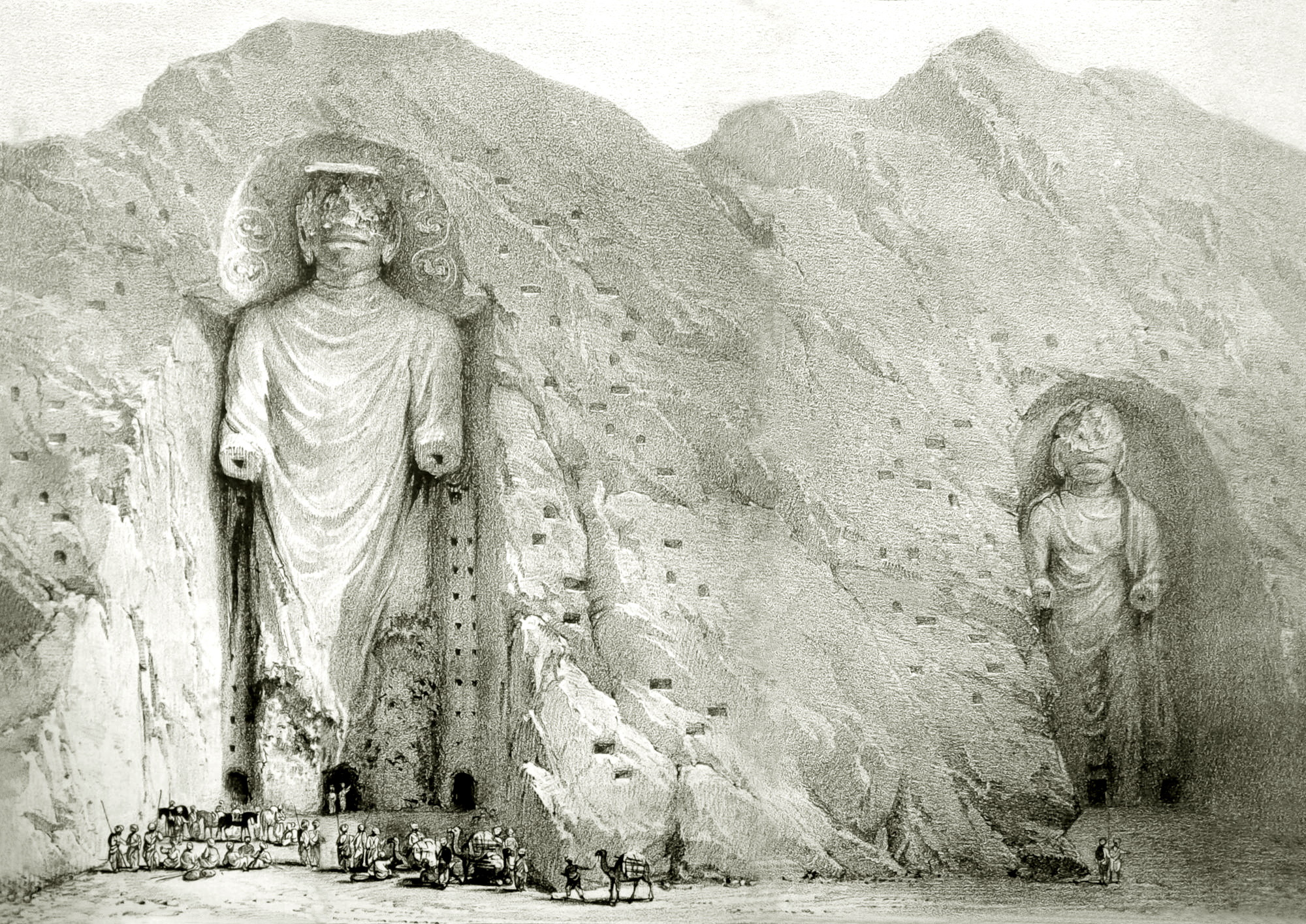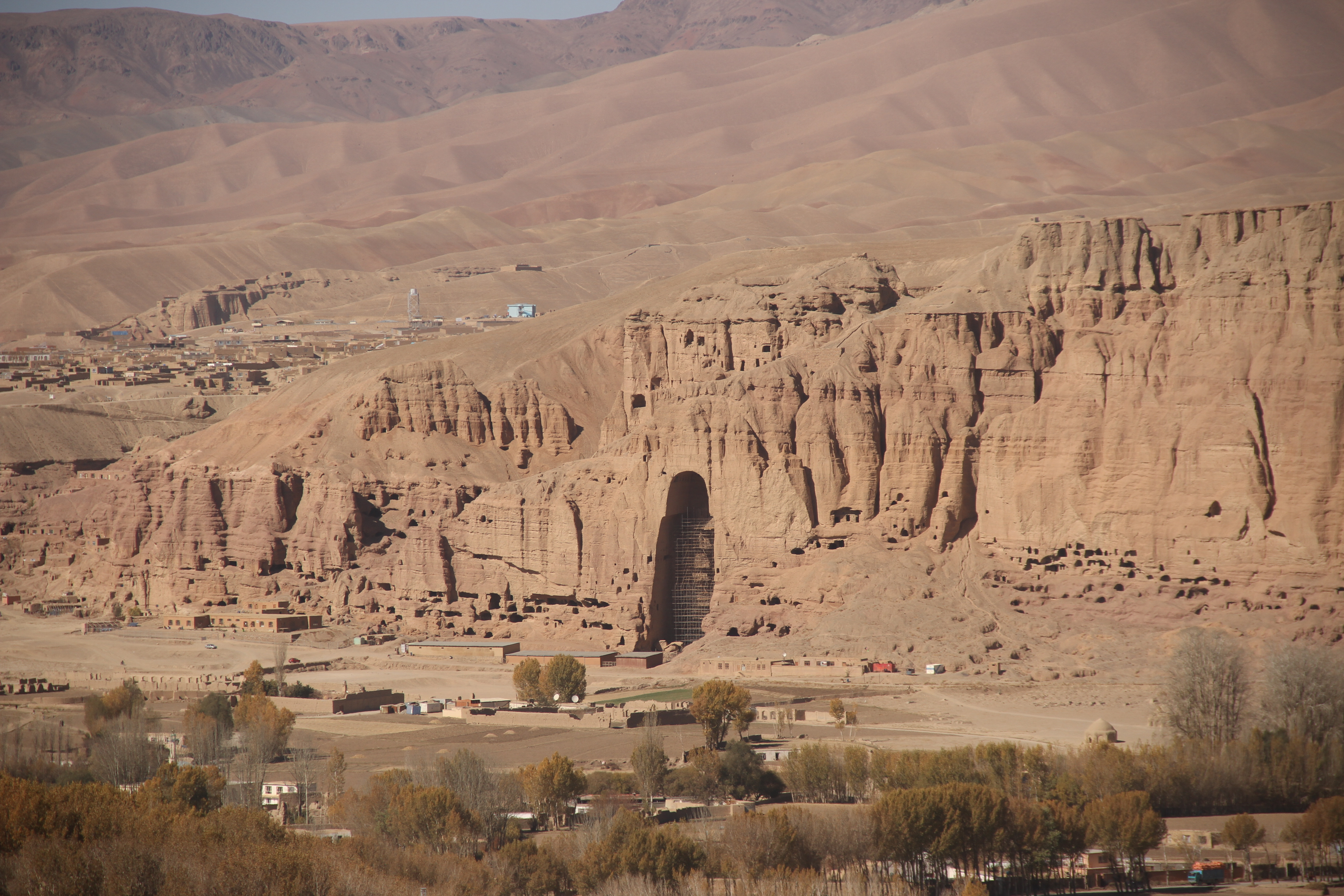In March 2001, the world looked on in dismay as the Taliban blew up the ancient Buddha statues of Bamiyan in Afghanistan. These colossal monuments carved into sandstone cliffs 1,500 years ago, were symbols of the region's fascinating history. Their destruction was a tragic loss for both Afghanistan and global heritage, and raised the question of a possible future restoration.
A Historical And Cultural Landmark
The Buddhas of Bamiyan were a pair of statues carved between the 3rd and 6th centuries AD, standing at 125 and 180 feet (38 and 55 meters) tall respectively. They were once part of a large Buddhist community near the Silk Road, reflecting Afghanistan's ancient role as a cultural crossroads. They survived invasions, natural disasters, and neglect, only to be destroyed at the dawn of a new millennium.
 Alexander Burnes, Wikimedia Commons
Alexander Burnes, Wikimedia Commons
The Destruction By The Taliban
In 2001, the Taliban declared the statues to be idols, forbidden under their interpretation of Islamic law. Despite global protests and pleas from international organizations, the Taliban used explosives and artillery to destroy the statues. The demolition was condemned worldwide as an act of cultural barbarism and an assault on Afghan history.
International Response And Preservation Efforts
After the destruction, the UN and UNESCO declared the Bamiyan Valley a World Heritage Site in 2003. A concerted effort began to preserve whatever remained, document the damage, and somehow prevent any further deterioration amid ongoing warfare. The niches where the statues once stood still attract visitors and researchers, a forlorn reminder of long gone glory.
Debates Over Reconstruction
The question of whether to reconstruct the Bamiyan Buddhas is complicated. Some say rebuilding them would honor Afghanistan’s heritage and allow healing to begin. Others think reconstruction will erase the scars left by the Taliban’s actions. The debate reflects the tension between preservation, memory, and authenticity.
Partial Restoration And Technological Solutions
Some reconstruction attempts have been made on a limited scale. In 2015, a Chinese art collective used 3D projection technology to recreate the image of the Buddhas within their empty niches temporarily. The projections were symbolic rather than permanent, but they showed how modern technology could bring back lost heritage without physically changing the site.
Reconstruction: An Uphill Battle
Political instability, warfare, and resource shortages make large-scale restoration difficult, to say the least. The Taliban’s return to power in 2021 complicates efforts to rebuild, since they've already demonstrated that they don't much care what the rest of the world thinks. That's not to mention the sheer technical challenges of the structural damage and the uncertain availability of original materials.
The Global Perspective
Locals and international experts are still divided over what to do with the Bamiyan Buddhas. Some Afghans hope to see the statues restored to promote tourism. Others are focusing on humanitarian needs rather than monument reconstruction. At the global level, discussions are still ongoing about how best to advance restoration with respect for the site’s historical trauma.
A Dream Fading Into The Wreckage Of The Past
The destruction of the Bamiyan Buddhas was a major cultural setback that still resonates. They’re gone, but their legacy endures through ongoing debates, preservation efforts, and technological initiatives. Whether or not the statues are ever rebuilt, they symbolize Afghanistan’s unpleasant history and the human desire to protect and honor the past.
You May Also Like:
The Disappearance Of Rome's Ninth Legion: Marching Through The Mists Of Time
The Great Mystery Of Easter Island









